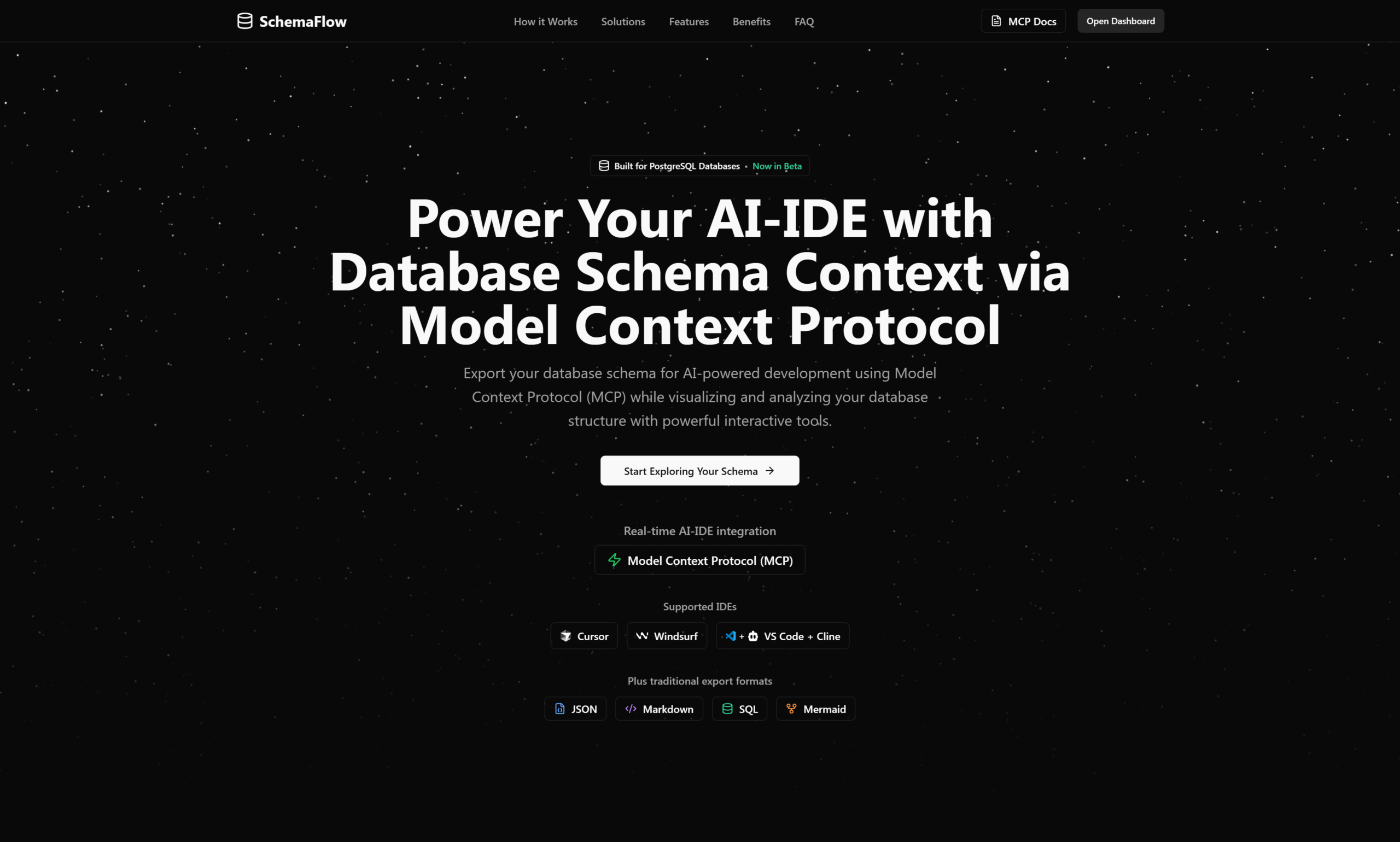Table of Contents
Overview
In the rapidly evolving world of AI-powered development, having instant access to your database schema is no longer a luxury, it’s a necessity. Enter SchemaFlow, a powerful tool designed to bridge the gap between your PostgreSQL or Supabase database and your AI-integrated development environment (AI-IDE). By providing real-time access to your schema via the Model Context Protocol (MCP), SchemaFlow empowers developers to build smarter, faster, and with greater confidence. Let’s dive into what makes SchemaFlow a game-changer for AI-assisted development.Key Features
SchemaFlow boasts a range of features designed to streamline your AI-driven development workflow:- Real-time synchronization of PostgreSQL and Supabase schemas: Ensures your AI-IDE always has the most up-to-date schema information, eliminating errors and improving code generation accuracy.
- Integration with AI-IDEs through MCP: Seamlessly connects your database schema to your AI development environment, allowing for intelligent code completion and analysis.
- Interactive schema visualizations: Provides a clear and intuitive visual representation of your database structure, making it easier to understand relationships and identify potential issues.
- Multi-format exports: JSON, Markdown, SQL, Mermaid: Offers flexibility in how you share and document your schema, catering to various needs and workflows.
- Tools for schema analysis and alignment checks: Helps you identify inconsistencies and potential problems within your schema, ensuring data integrity and application stability.
How It Works
SchemaFlow simplifies the process of connecting your database schema to your AI-IDE. First, you connect your PostgreSQL or Supabase database to SchemaFlow. The tool then caches the schema and generates a unique token for MCP integration. Your AI-IDE uses this token to access the cached schema information in real-time. This allows the AI to understand your database structure and generate more accurate and relevant code suggestions. It’s a simple, yet powerful way to enhance your AI-assisted development.Use Cases
SchemaFlow offers a variety of applications for developers leveraging AI:- Enhancing AI-assisted code generation with real-time schema data: By providing your AI-IDE with up-to-date schema information, SchemaFlow enables more intelligent and accurate code generation, saving you time and reducing errors.
- Visualizing database structures for better understanding: The interactive visualizations make it easier to grasp complex database relationships, improving collaboration and reducing the learning curve for new team members.
- Exporting schemas for documentation or collaboration: The multi-format export options allow you to easily share your schema with colleagues, clients, or for documentation purposes.
- Performing schema analysis to identify potential issues: SchemaFlow’s analysis tools help you proactively identify potential problems within your schema, ensuring data integrity and preventing application errors.
Pros & Cons
Like any tool, SchemaFlow has its strengths and weaknesses. Let’s break them down:Advantages
- Streamlines AI-assisted development with live schema access.
- Supports multiple export formats for flexibility.
- Enhances understanding of database structures through visualization.
Disadvantages
- Currently limited to PostgreSQL and Supabase databases.
- Requires familiarity with MCP for optimal use.
